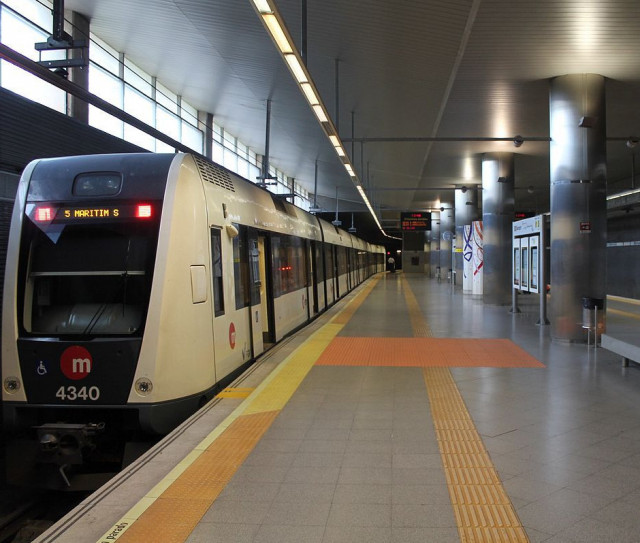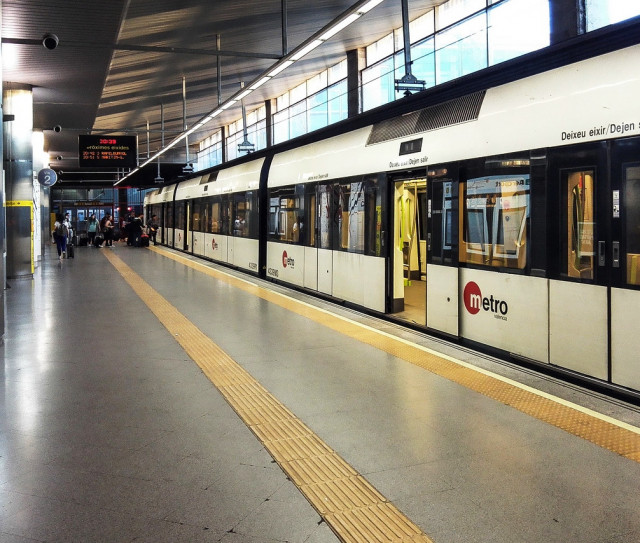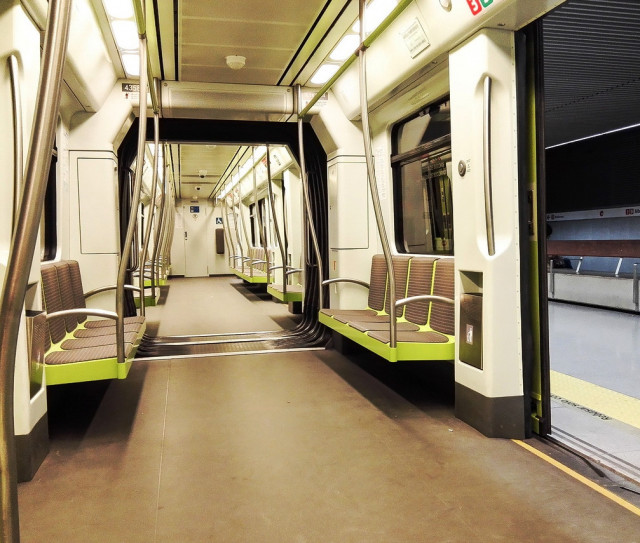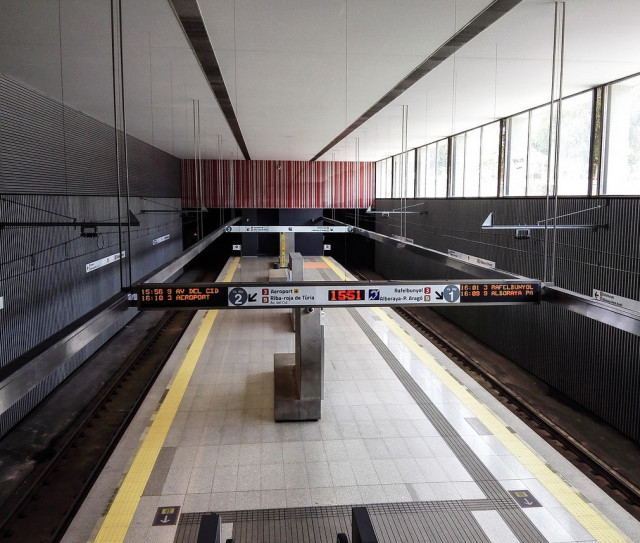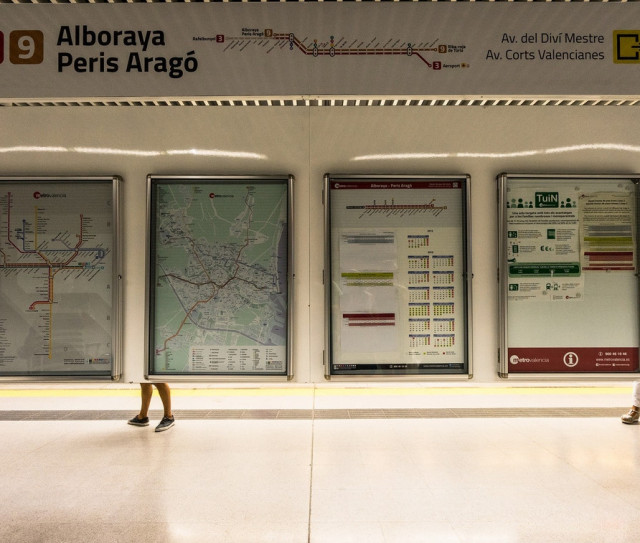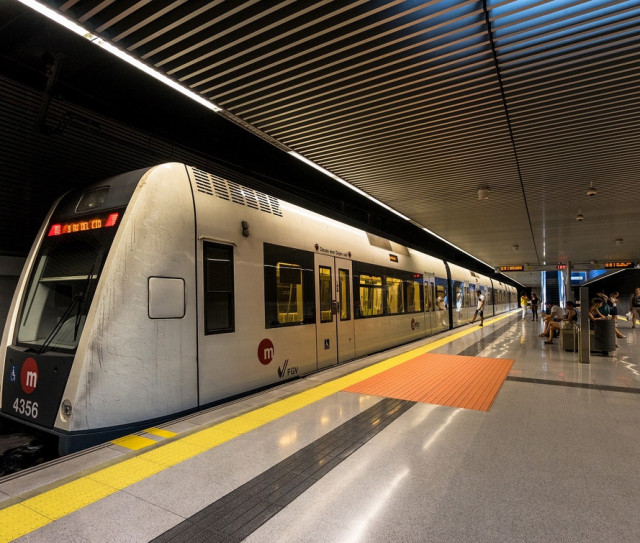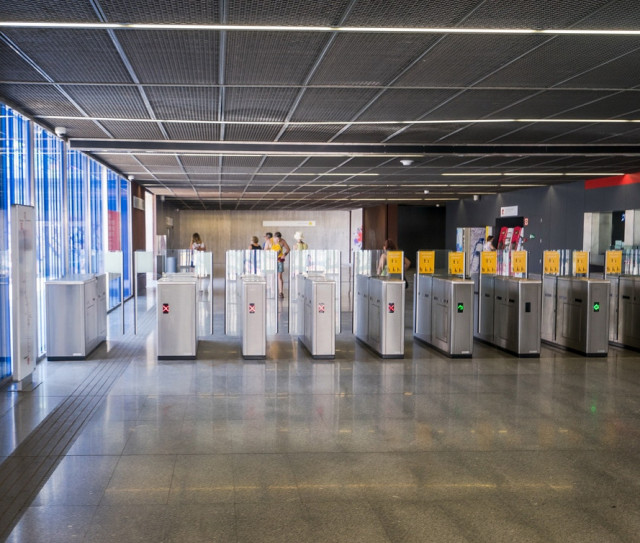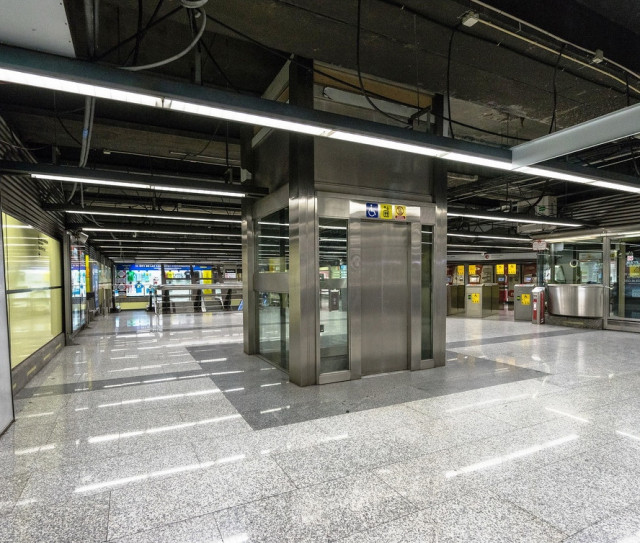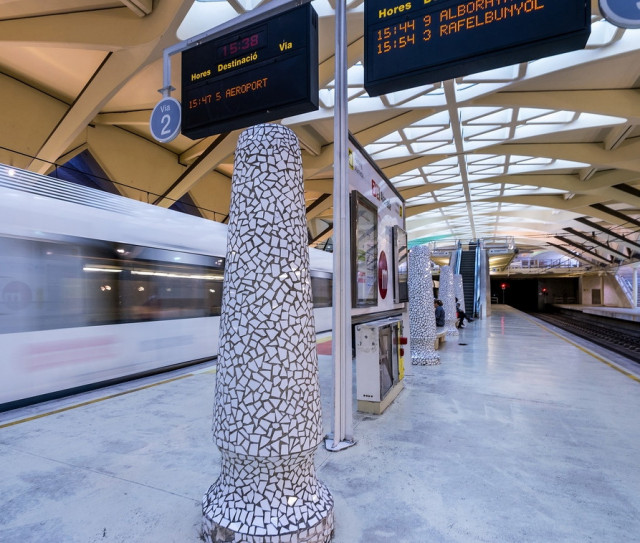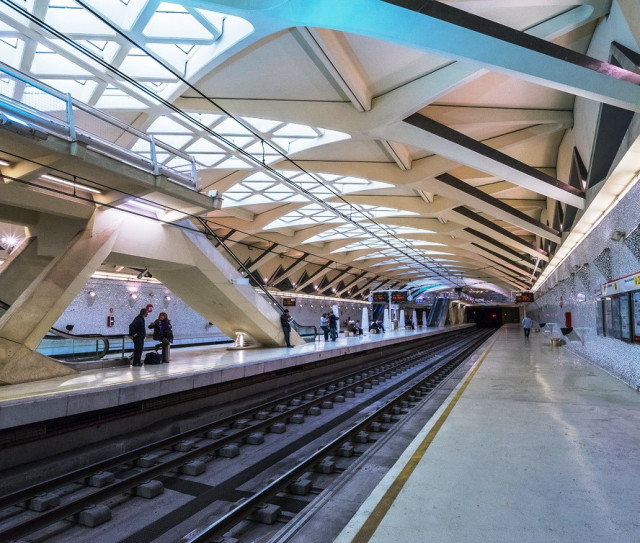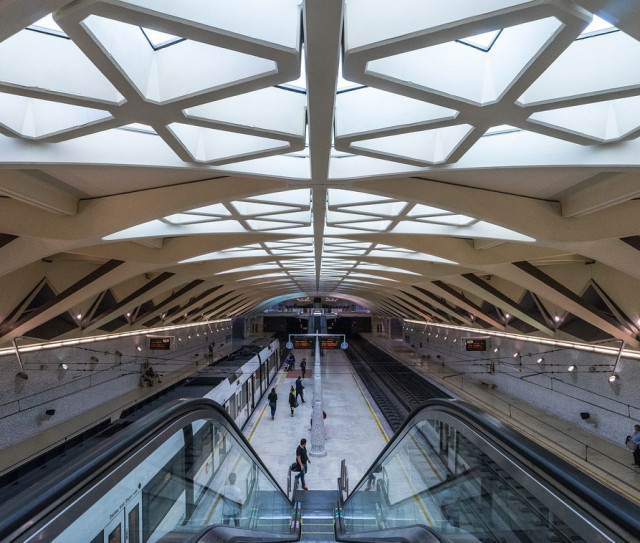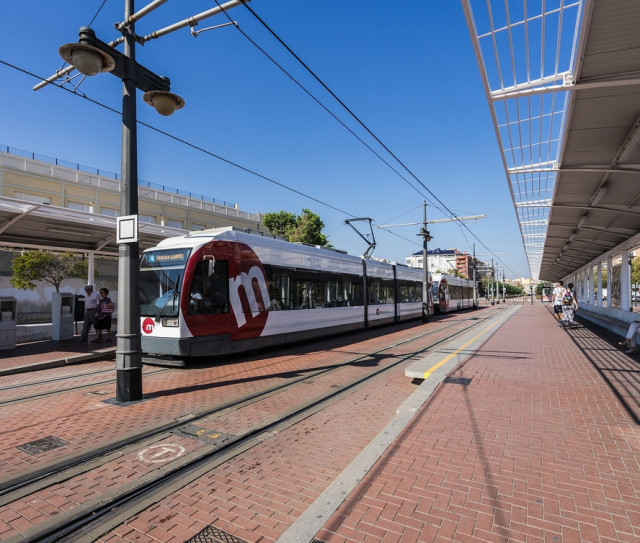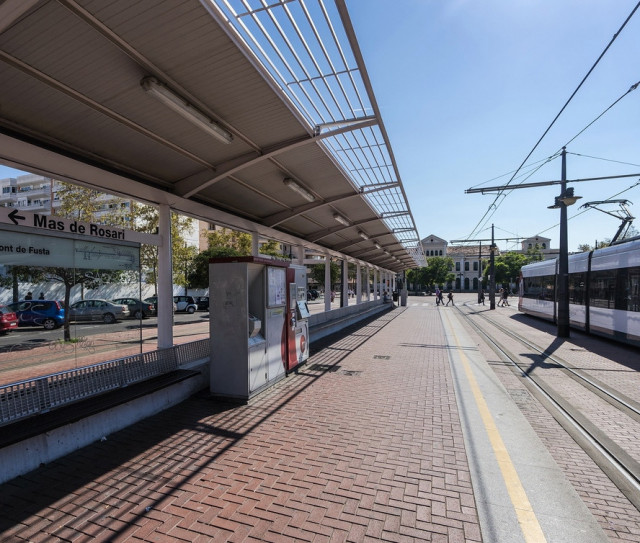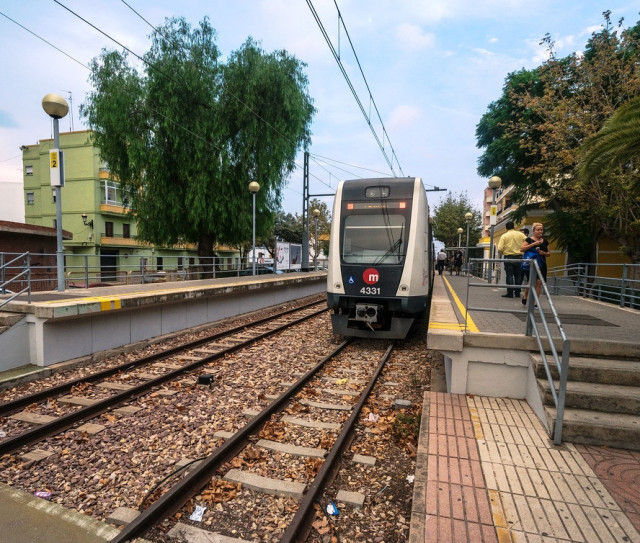Info
The Valencia Metro, inaugurated in 1988, ranks as Spain's third-largest and busiest metro system. It emerged from the foundation of the old Trenet de Valencia commuter rail network, which dates back to 1888. Initially, the Valencia metro encompassed 48 stations serving two key routes. One route connected central Valencia with the southern suburb of Villanueva de Castellon, while the other extended to the small town of Liria in the north.
Presently, the Valencia metro network comprises six metro lines and four tram lines, with a predominant surface presence. Renowned for its convenience, speed, and cost-effectiveness, the Valencia Metro serves around 200,000 passengers daily. Its extensive coverage not only encompasses the city center but also stretches into neighboring cities and suburbs.
The Valencia Metro facilitates travel to prominent transportation hubs, including Valencia's primary train station (Estacio Nord), the central bus station (Estacion De Autobuses de Valencia), the cruise port (The Port of Palma's Poniente Quay), and Valencia Manises Airport (Aeropuerto de Manises), which boasts a dedicated metro line. Furthermore, metro stations are strategically located near many of Valencia's attractions, such as the Oceanographic Park (L'Oceanogràfic), the City of Arts and Sciences (Ciudad de las Artes y las Ciencias), the Central Market (Mercado Central de Valencia), the Serranos Fortress Towers (Torres de Serranos) and Torres de Quart, as well as Valencia Cathedral (La Catedral de Valencia).
Operated by FGV, the Valencia Metro is an integral part of the city's public transport network, working in synergy with buses. The transport network is partitioned into four tariff zones, and ticket pricing depends on the number of zones crossed, varying from 1.50 to 4.80 EUR. Entrance and exit at Valencia Metro stations are strictly regulated through turnstiles, necessitating passengers to retain their tickets until the end of their journey.
Valencia Metro stations are discerned by the distinctive letter M enclosed in a red circle. While elevated stations resemble commuter train stations or tram stops, some feature unique canopies. Underground stations are well-equipped with escalators and elevators, characterized by their minimalist design, limited advertising, and comprehensive navigation aids like diagrams, signs, and information boards. Two stations, Colón and Alameda, merit special attention. Colón is situated near Valencia's historic city gates and houses an exhibition of archaeological artifacts uncovered during construction. Meanwhile, Alameda station stands out as the most stunning metro station in Valencia and ranks among the world's most captivating stations. Designed by architect Santiago Calatravo, it boasts an extraordinary structural style within the former Turia Riverbed.
Valencia Metro platforms come in both island and coastal types. Many of them serve trains from multiple lines, necessitating passengers to pay attention to the train's direction when boarding. The trains themselves are modern, air-conditioned, well-maintained, and configured as continuous units. Doors on Valencia Metro carriages operate automatically.
Lines
The Valencia Metro, also known as Metrovalencia in Spanish, boasts an extensive network comprising 146 stations, which are distributed across 6 metro lines and 4 tram lines. Each of these lines is uniquely identified by both a serial number and a distinct color code, making it easy for passengers to navigate: Line 1 (yellow), Line 2 (pink), Line 3 (red), Line 4 (blue), Line 5 (green), Line 6 (lilac), Line 7 (orange), Line 8 (blue), Line 9 (brown), and Line 10 (light green).
The Valencia metro operates on weekdays from 5:30 AM to 11:00 PM, while on weekends and holidays, it runs from 6:00 AM to 11:30 PM. Trains typically run at intervals of 5 to 20 minutes, ensuring frequent and accessible service to passengers throughout the day.
Fare
The Valencia metro system is conveniently divided into four tariff zones, denoted as A, B, C, and D, each influencing the ticket price. Fares for individual tickets vary from 1.50 to 4.80 EUR, contingent on the selected zones. It's important to note that when purchasing a ticket, an additional 1 EUR is required for acquiring a reusable Móbilis card, which can subsequently be recharged at ticket offices or vending machines.
For those seeking cost-effective options, SUMA10 passes offer the convenience of 10 trips, with prices ranging from 8.00 EUR to 32.00 EUR, depending on the chosen zones. Alternatively, travelers looking for unlimited mobility within central zones A and B can opt for the SUMA T pass, available for 24 hours (4.00 EUR), 48 hours (6.70 EUR), or 72 hours (9.70 EUR). For those requiring extended access, monthly SUMA passes are available, with costs ranging from 35 EUR to 131.10 EUR, depending on the applicable areas. All SUMA passes are valid for use across the Valencia metro, tram, and bus networks. Please note that there is an additional fee for the SUMA card itself, with a paper card costing 1.00 EUR and a plastic card priced at 2.00 EUR.
Tourists visiting Valencia can take advantage of the Valencia Card, offering options for 1 day (13.50 EUR), 2 days (18.00 EUR), or 3 days (22.50 EUR). This card provides unlimited access to public transport and includes discounts at various Valencia attractions, as well as at select shops, restaurants, and cafes.
Moreover, children under 10 years of age can travel for free on public transport in Valencia when accompanied by an adult with a paid ticket. It's advisable to carry identification for the child to verify their age when using this benefit.
Ticketing
Valencia metro tickets can be conveniently obtained and recharged using vending machines or, where available, at standard ticket offices situated at select stations. In case you encounter any difficulties with the machine, don't hesitate to seek assistance from metro personnel. These machines accept both cash and bank cards as payment methods.
Upon entering the station and passing through the turnstile, it's essential to place your ticket on the designated circle on the right for validation. Keep in mind that you should retain your ticket until you've completed your journey, as you'll need it again when exiting the metro. Valencia metro lines are regularly patrolled by ticket inspectors, so ensuring you have a valid ticket is essential to avoid potential penalties.
 English
English Deutsch
Deutsch Français
Français Italiano
Italiano Español
Español Português
Português Русский
Русский Українська
Українська Polski
Polski Čeština
Čeština Ελληνικά
Ελληνικά Türkçe
Türkçe Tiếng Việt
Tiếng Việt ไทย
ไทย 日本語
日本語 中文
中文 한국어
한국어